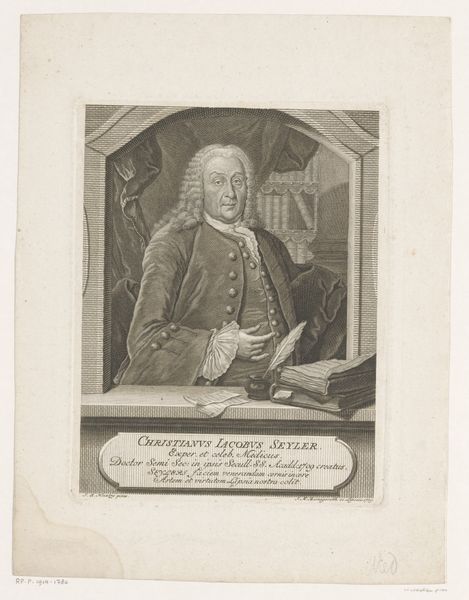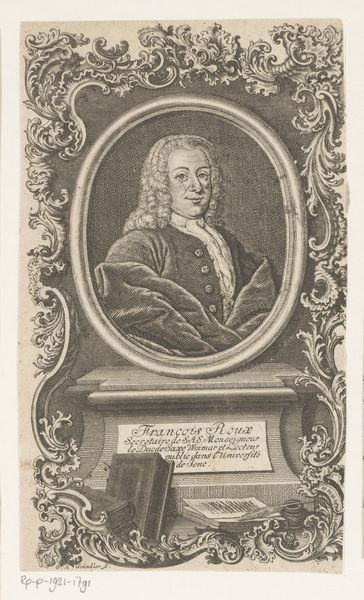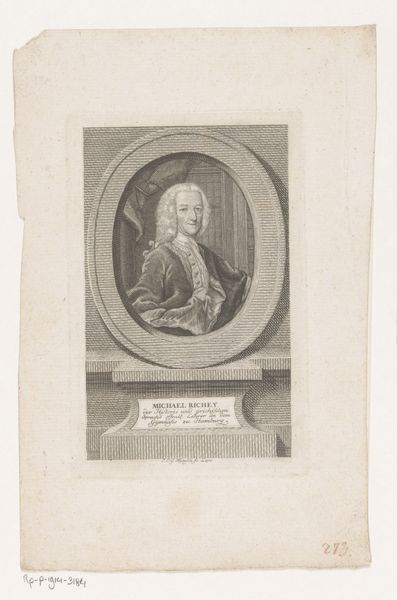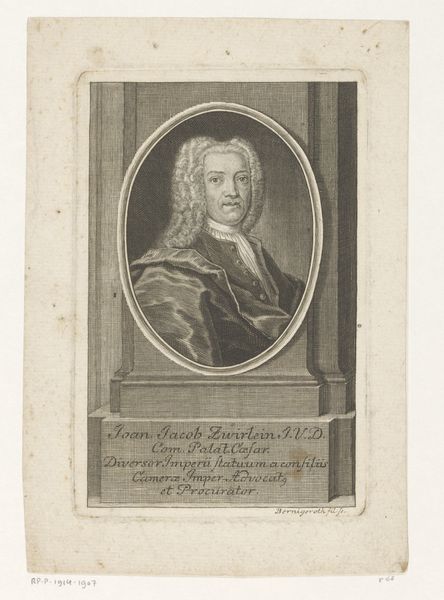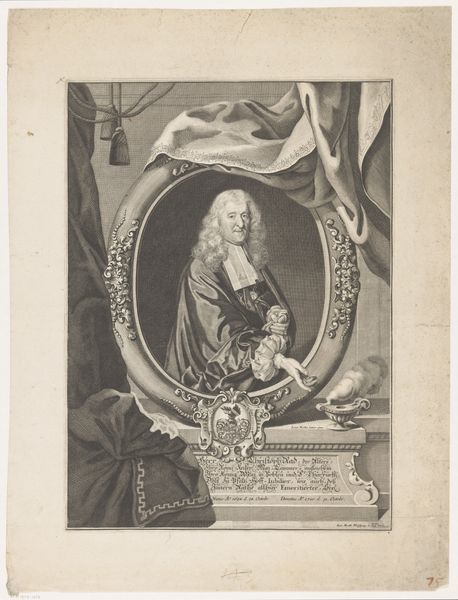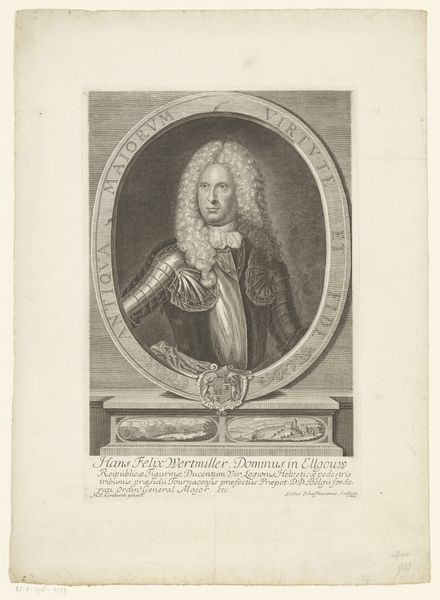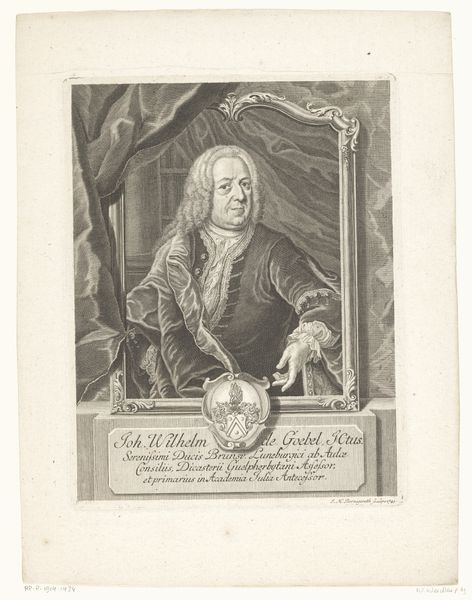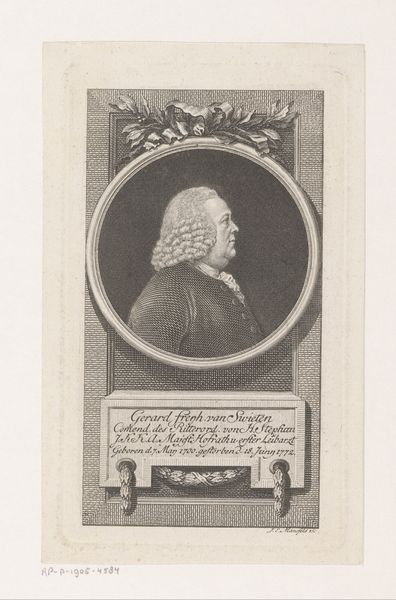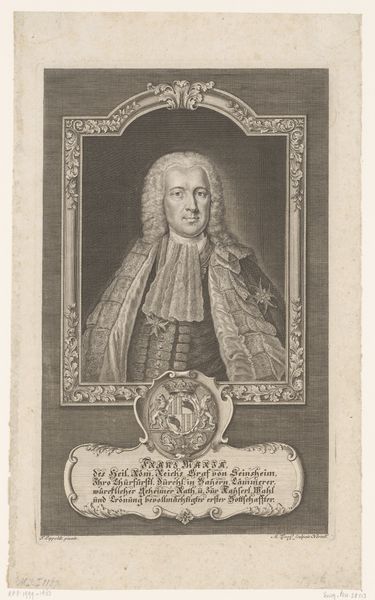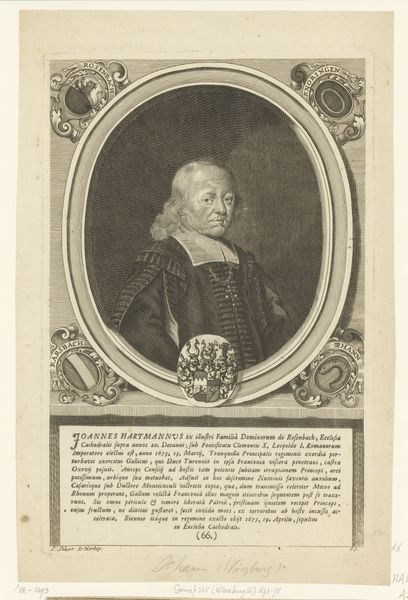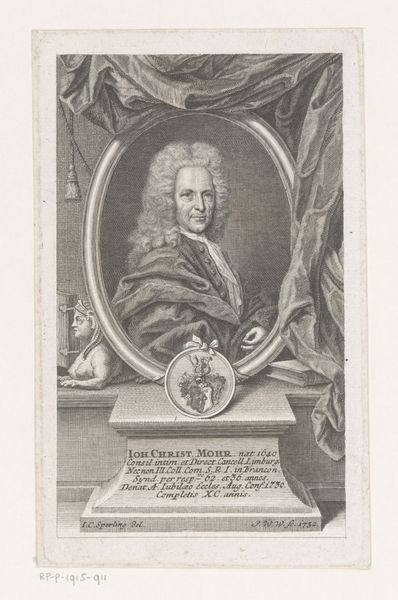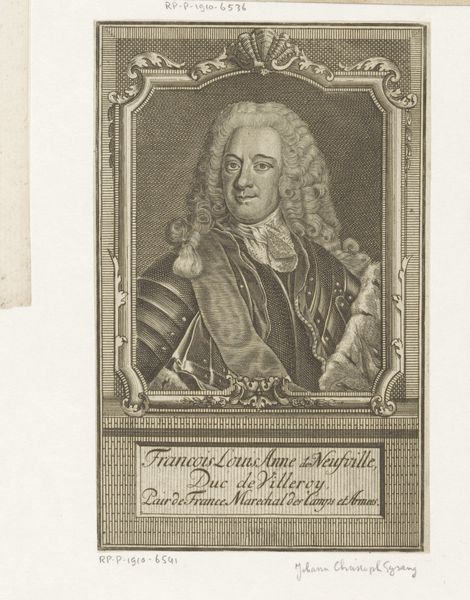
print, engraving
#
portrait
#
baroque
# print
#
history-painting
#
engraving
Dimensions: height 203 mm, width 150 mm
Copyright: Rijks Museum: Open Domain
Curator: Looking at this engraving, the first thing that strikes me is the formal framing and how that structures our understanding. Editor: It gives the image a classical, even theatrical, air. The portrait of Christoph Jacob Trew, made by Gottfried August Gründler in 1756, almost feels like a stage set, doesn’t it? You almost expect the curtain to draw back. I'm especially interested in the materials used—the fine lines etched to bring such detail. Curator: Exactly. Trew is depicted as this sort of enlightened intellectual, holding a book and papers—symbols of knowledge. I wonder, what cultural assumptions about scholarship were Gründler working with in choosing such details? Editor: The emphasis on paper and print surely speaks to the power of accessible knowledge at the time. Each line is a record of labor and intent, mirroring Trew’s own investment, and society's increasing access to new information. Look at how his coat is detailed with tiny markings. Curator: The level of ornamentation is really remarkable, with scrolls and foliage giving this feeling of abundance and Baroque excess, although I find myself wanting to know more about the symbolic relevance. Do those details reveal specific aspects of Trew’s identity or legacy? Editor: The frame and its elaborate details denote status, but the very nature of print allows for a kind of democratization of image and influence. The engraving process meant it could be reproduced and distributed, widening the scope of Trew's visibility beyond an exclusive elite. The creation itself has a clear relationship with social structures and the role of reproduction. Curator: Interesting. It reminds me how portraits operate, they were never neutral representations. The artist is participating in meaning making, solidifying and contributing to Trew's cultural position through image. Editor: Ultimately, the image represents this intersection of artistic labor, material possibility, and cultural construction. Considering the materials involved brings us a fresh way of looking at the society surrounding it. Curator: Well, I think I will carry this newfound understanding as I continue my examination of portraits as representations of complex symbolic order. Editor: Indeed! Focusing on the materiality reminds us that we can read social narratives into the physical remnants of production and consumption.
Comments
No comments
Be the first to comment and join the conversation on the ultimate creative platform.
